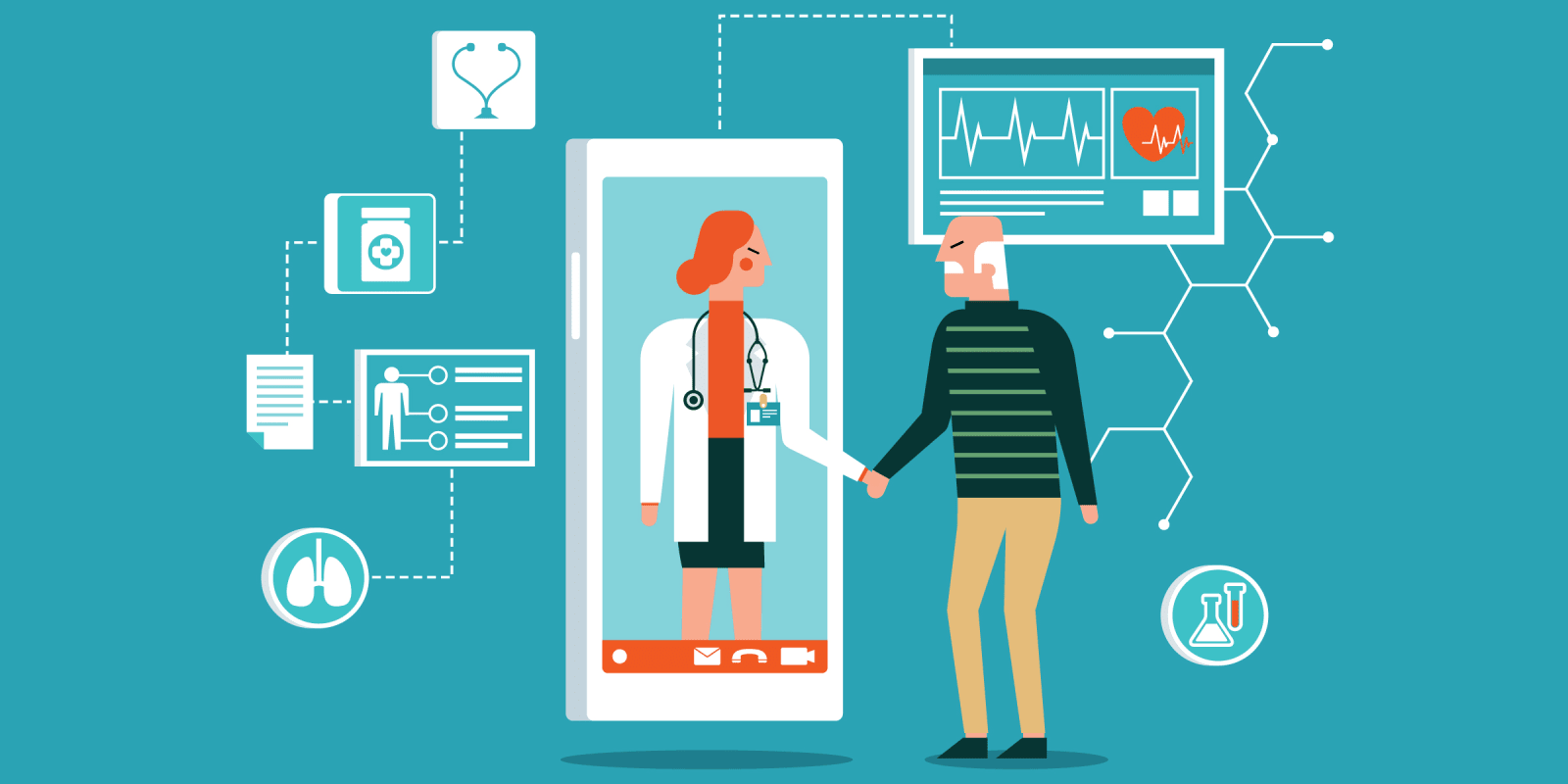“In 30 years, would you rather die from Alzheimer’s disease or COVID-19?” a patient asked me over the phone.
Stunned by the question, I answered, “I’ve never thought about that.” While conducting telehealth screens to assess how veterans were coping with diabetes during the pandemic, I hadn’t expected to get metaphysical.
“Think now, I have time.” Mr. Veteran replied over the static.
So I did. I thought about who I was then: a third-year medical student, newly returned to clinical rotations after a three-month hiatus in which students were pulled from hospitals during the pandemic, who was nervous about navigating the new telehealth landscape. I wanted so badly to make myself useful to patients and providers in this changed world.
I thought about the role I was learning to grow into: a doctor armed with the skills, fortitude, and empathy to stand on the front lines, instead of being forced to retreat. My role models had borne witness every day over the past several months to small miracles, like patients coming off ventilators, and weathered staggering losses. How could I prepare for that?
I thought about other things I wanted to do: start a family, travel the world, and grow old, surrounded by loved ones. In 30 years, I’d be 54. I checked Mr. Veteran’s chart: 68 years old. Then I thought about the things he’d done in his lifetime. He’d served in the Vietnam War, seen combat, lost friends, had nightmares, and started his own family. He was diagnosed with diabetes years ago and regularly injected insulin. His most recent hemoglobin A1C level in January was 10.2%.
That’s when I caught myself in the trap. His diabetes, medications, and lab results — those weren’t things he’d done. Those were data points pulled from his chart when his A1C level exceeded 9%, flagging him as an “at-risk patient” with “poorly controlled diabetes” who would benefit from this phone screen. He was my first house call, and it was supposed to be simple.
Upon returning to primary care at the Bronx Veterans Affairs (VA) hospital, I noticed how the shift from in-person visits to telehealth further complicated the already complex task of diabetes management, resulting in A1Cs being outdated. The doctor and pharmacist now scheduled separate appointments, creating an additional time burden for patients. Veterans found themselves in uncertain situations regarding home security, employment status, sick family members, and homeschooling children. We, their primary care providers, could link struggling patients with resources in these areas, but we would never know they needed help unless they scheduled an appointment. What if it was too late by then?
While patients with diabetes are not at increased risk for developing COVID-19, they are twice as likely to develop more severe complications requiring ICU care. Furthermore, COVID-19 mortality is thrice as high in the diabetic population as in the general population. Given these consequences, I found it unacceptable to allow patients with poorly controlled diabetes to remain uncontacted.
So I took the frustration I’d harbored from three months of being unable to directly contribute to the medical field and devised a phone screen to help at-risk patients identify barriers to care in lowering their A1Cs. Guided by our conversations, I made referrals to pharmacists, dieticians, smoking cessation groups, mental health providers, and online exercise programs. What I’d never expected through the phone screen was a conversation in which I’d be asked to choose my own executioner: COVID-19 or Alzheimer’s disease.
“Still thinking?” Mr. Veteran’s question cut through my thoughts.
“Yes,” I admitted. “I’ve studied many diseases and different ways to die, but I’ve never thought about choosing one for myself.”
“I have. I’m not eager to die, but I’m content. I’m blessed to play with my grandchildren every day during quarantine. I’m lucky that I made it out of the war. And I know I never want to burden my family. You asked me how I was faring during this pandemic? I’m not afraid, I’d choose the virus. I’m taking each day as it comes, grateful for each one.”
We chatted a bit more. He told me the names of his medications and grandchildren. I referred him to an online smoking cessation group, and he thanked me sincerely for the call. After we hung up, I tried to write my note.
I realized then the biggest flaw in the EMR: I could not truly document the richness of this encounter, how much our 30-minute conversation humbled me. I’d learned so much about a person I’d never seen through a simple phone call, but my note would only say that Mr. Veteran was up-to-date on his medications and wanted to stop smoking. However, even though the note would lack the human connection we’d forged, I took the lesson he taught me into every other house call I made during my time at the Bronx VA.
I talked with 13 other veterans about their diabetes management during COVID-19 and made 11 referrals — 11 opportunities for growth that might have otherwise gone overlooked. Beyond these numbers, I learned about the people behind them. I celebrated with patients thankful for the gift of time this pandemic had bestowed. Now, instead of late nights snacking at the office, they cooked dinner with their families. I commiserated with patients overwhelmed from homeschooling who’d relapsed to cigarettes for stress relief. I mourned with patients who’d lost their parents and had to be strong for their children, and with those who couldn’t see an end and were surprised when someone from their doctor’s office took the time to check in. There were some little miracles and some staggering losses.
The pandemic was and still is driving a sweeping wave of change over health care, including converting in-person encounters to telehealth overnight. In the years to come, physicians will contend with the gap it created in chronic disease management. But no matter what the EMR doesn’t include, the pandemic did not erase the power of human connection in patient management. COVID-19 is a heterogenous experience unique to each patient, and I encourage my fellow medical students returning to rotations and unsure of how to prepare for this new era of medicine to take the time to make that connection.
Maeher Grewal is a third-year medical student at Columbia University Vagelos College of Physicians and Surgeons. She earned her BS in neurobiology from Georgetown University and hopes to specialize in otolaryngology. In between rotation responsibilities, she enjoys reflecting on her medical experiences through creative writing.
Click here to see more perspectives on COVID-19 from the Doximity network.
Click here for up-to-date news about COVID-19 on Doximity.





